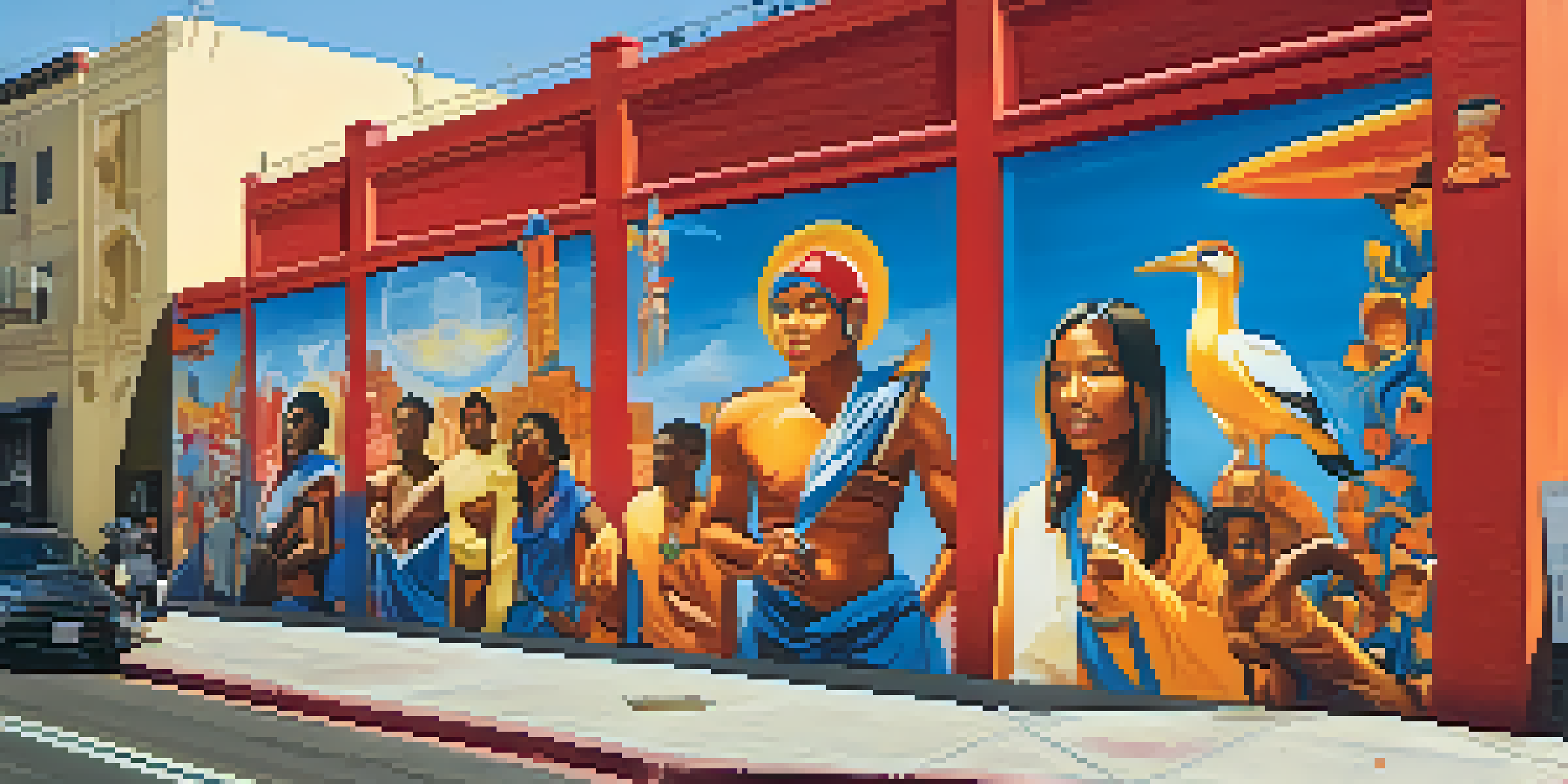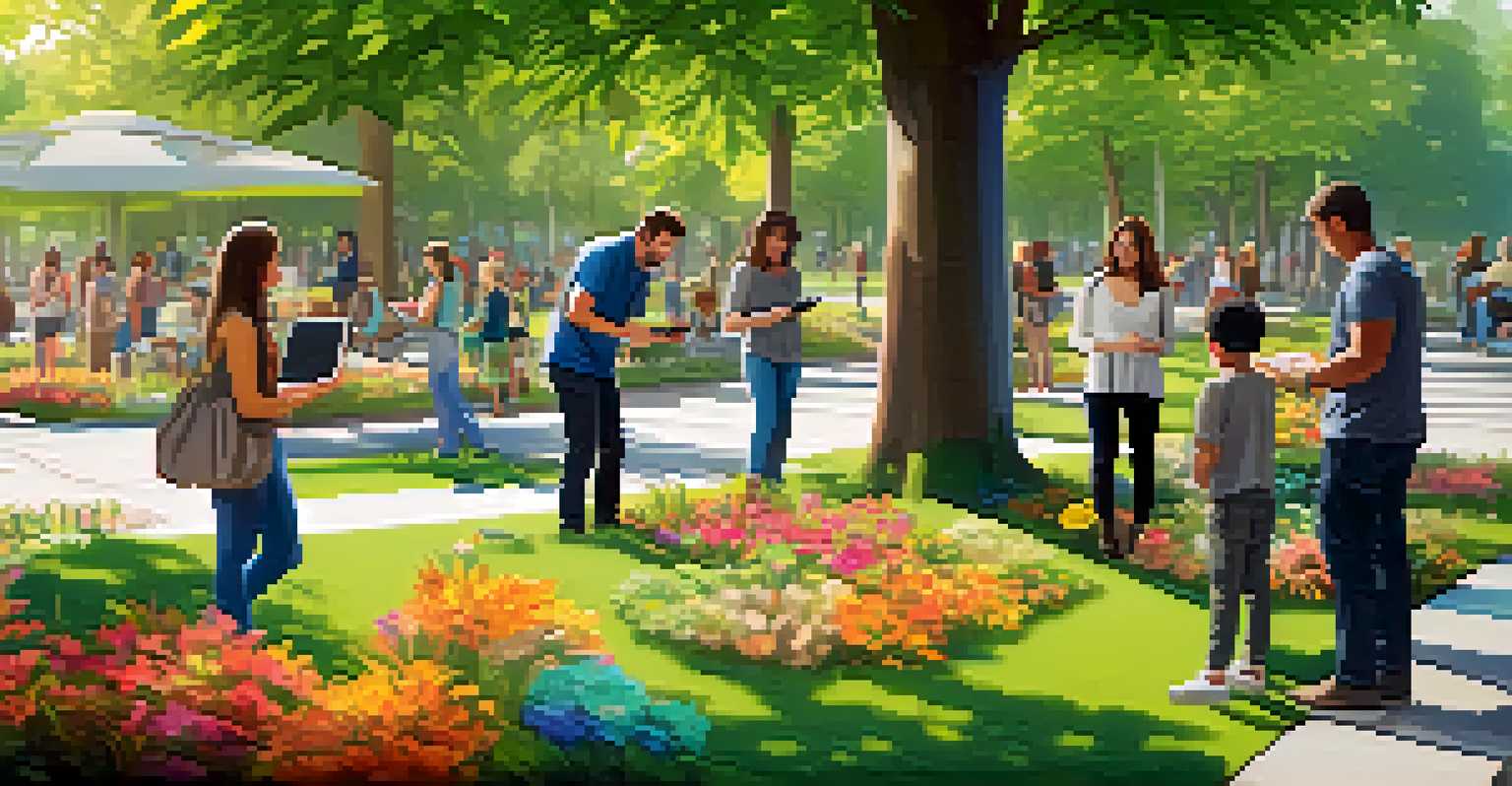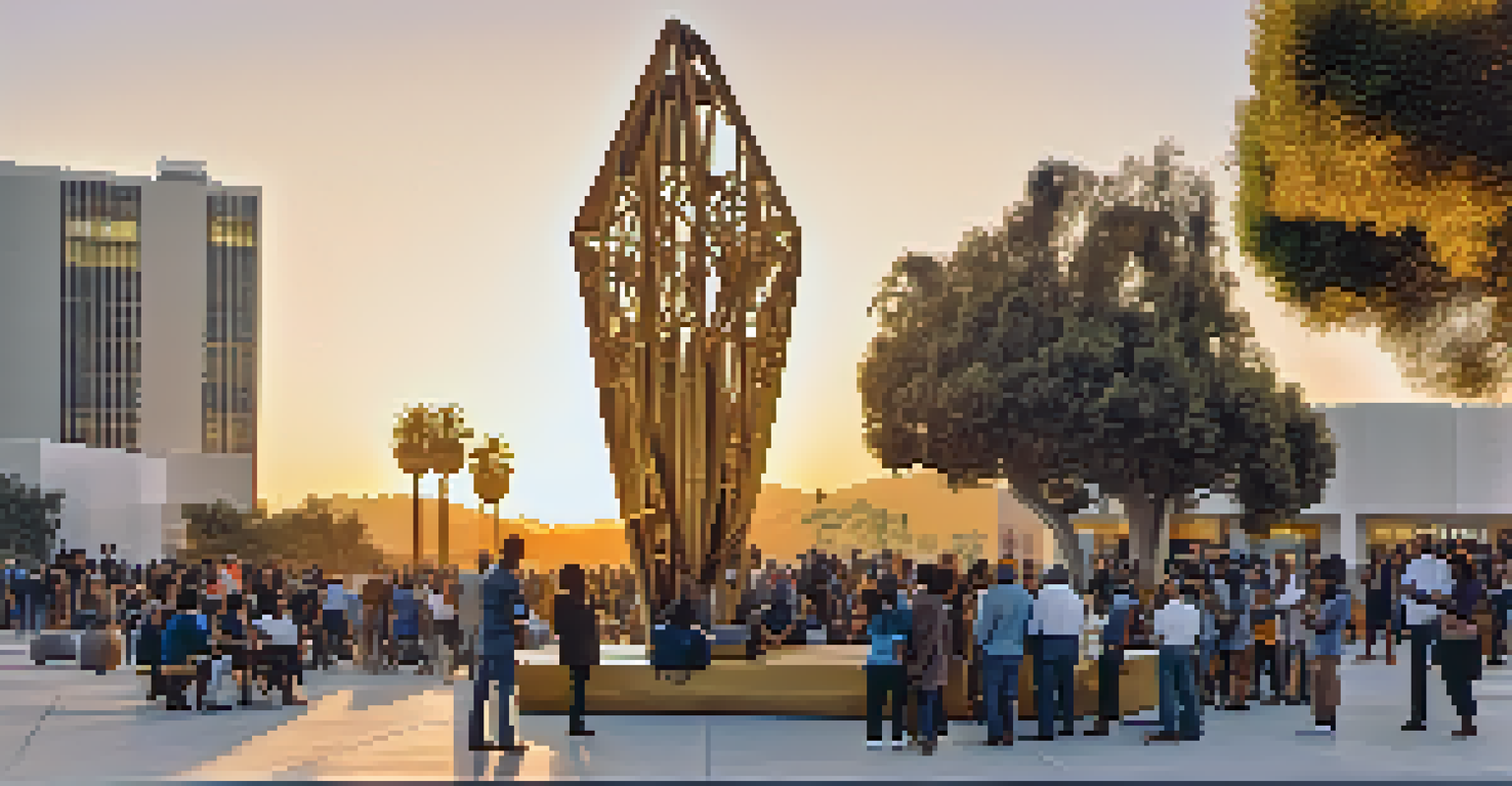The Role of Public Art in Transforming Los Angeles Communities

Understanding Public Art: More Than Just Aesthetic
Public art encompasses a wide range of creative expressions, from murals to sculptures, often found in public spaces. It serves as a medium for artists to communicate important social messages and cultural narratives. In Los Angeles, these artworks reflect the city’s diversity, capturing the essence of its many neighborhoods and communities.
Art is not what you see, but what you make others see.
Beyond beautification, public art plays a vital role in fostering community identity. By showcasing local stories and histories, these installations help residents feel a sense of belonging and pride in their surroundings. This connection can be especially powerful in a sprawling metropolis like LA, where neighborhoods can feel isolated from one another.
Moreover, public art can stimulate conversations around pressing issues such as social justice, environmental concerns, and community challenges. Through these dialogues, artwork becomes a catalyst for change, encouraging residents to engage with their environment and each other in meaningful ways.
The Economic Impact of Public Art in LA
Public art not only enriches the cultural fabric of Los Angeles but also has significant economic benefits. Art installations can draw tourists and locals alike, boosting foot traffic in neighborhoods and supporting local businesses. For example, popular murals often become must-see attractions, encouraging visitors to explore nearby shops and restaurants.

Investing in public art can also enhance property values. Areas with vibrant art scenes often experience a rise in real estate prices, as people are drawn to the unique character and cultural offerings of these neighborhoods. This trend can help fund further community projects, creating a positive feedback loop.
Public Art Fosters Community Identity
Public art creates a sense of belonging by reflecting local stories and histories, especially in diverse cities like Los Angeles.
Additionally, public art projects often involve local artists and workers, providing job opportunities and fostering economic development. By prioritizing local talent, communities can ensure that the benefits of these projects circulate within the neighborhood, supporting a thriving local economy.
Cultural Representation and Inclusivity in Public Art
One of the most significant roles of public art in Los Angeles is its ability to represent the city’s diverse population. Artists from various backgrounds contribute their unique perspectives, creating artworks that resonate with different cultural groups. This representation fosters a sense of inclusivity and validates the experiences of marginalized communities.
Public art should be about the community, it should be about the people who live there and what they want to see.
Public art projects often involve community input, ensuring that the artworks reflect the hopes, dreams, and narratives of local residents. This participatory approach not only empowers artists but also strengthens community ties. When people see their stories depicted in public spaces, it can instill a greater sense of pride and ownership over their neighborhoods.
Furthermore, these inclusive art projects can serve as educational tools, promoting cultural awareness and understanding among residents. By engaging with art that reflects diverse experiences, communities can foster empathy and connection, bridging gaps between different cultural groups.
Public Art as a Tool for Social Change
Public art has the power to address social issues and spark important conversations. In Los Angeles, many artists use their work to call attention to topics like homelessness, immigration, and racial inequality. These thought-provoking installations encourage viewers to reflect on these pressing challenges and consider their roles in creating positive change.
Art can be a powerful form of protest, offering a voice to those who may feel unheard. Murals and installations that address social justice issues can galvanize communities, inspiring collective action and advocacy. In LA, public art has been instrumental in mobilizing residents around various causes, fostering a sense of unity in the pursuit of justice.
Economic Benefits of Public Art
Investing in public art boosts local economies by attracting tourists, increasing property values, and providing job opportunities for local artists.
By amplifying marginalized voices and raising awareness about social issues, public art can contribute to broader movements for change. This transformative potential underscores the importance of supporting and investing in art that challenges the status quo and encourages civic engagement.
The Role of Technology in Public Art
As technology continues to evolve, so does the landscape of public art in Los Angeles. Digital art installations, augmented reality experiences, and interactive murals are becoming increasingly popular, engaging audiences in new and exciting ways. These technological advancements allow artists to push the boundaries of traditional public art forms.
For example, augmented reality can bring static murals to life, offering viewers an immersive experience that deepens their connection to the artwork. This innovative approach not only captivates audiences but also creates opportunities for artists to explore new mediums and styles. The incorporation of technology can attract a younger demographic, fostering a new generation of art lovers.
Moreover, technology can facilitate community engagement, with social media platforms allowing residents to share their experiences with public art. This encourages dialogue and discussion around these installations, further embedding them into the fabric of the community. As technology and art continue to intersect, the possibilities for public art in LA are virtually limitless.
Challenges Facing Public Art Initiatives
Despite its many benefits, public art initiatives in Los Angeles face several challenges. Funding can be a significant barrier, as securing financial support for projects often relies on grants, sponsorships, or community fundraising. This can limit the number and scope of projects, especially in underserved neighborhoods that would benefit most from artistic interventions.
Additionally, public art can sometimes be met with resistance from local communities or stakeholders who may not agree with the themes or styles presented. Balancing artistic expression with community values and expectations is essential to ensure that projects are embraced rather than contested. Engaging with residents early in the process can help mitigate these challenges.
Public Art as a Catalyst for Change
Through addressing social issues and amplifying marginalized voices, public art inspires community dialogue and action for positive change.
Lastly, ongoing maintenance and preservation of public art is crucial for its longevity. Weather, vandalism, and wear can take a toll on installations, requiring regular upkeep to ensure that they remain vibrant and relevant. Communities must prioritize the care and sustainability of their public art to fully reap its benefits.
Future Directions for Public Art in Los Angeles
Looking ahead, the future of public art in Los Angeles is bright, with new opportunities for innovation and collaboration. As communities continue to evolve, artists can play a pivotal role in shaping the narratives of their neighborhoods. Embracing diverse voices and perspectives will be key in creating inclusive and impactful public art.
Emerging technologies will likely continue to influence the public art scene, offering artists new ways to engage audiences and enhance their work. This evolution can foster a dynamic dialogue around art's role in society, encouraging further exploration of themes like environmental sustainability and social equity.

Ultimately, public art has the potential to transform Los Angeles communities for the better. By prioritizing collaboration, inclusivity, and sustainability, artists and residents can work together to create a vibrant city where art serves as a bridge, uniting diverse individuals and fostering a shared sense of belonging.